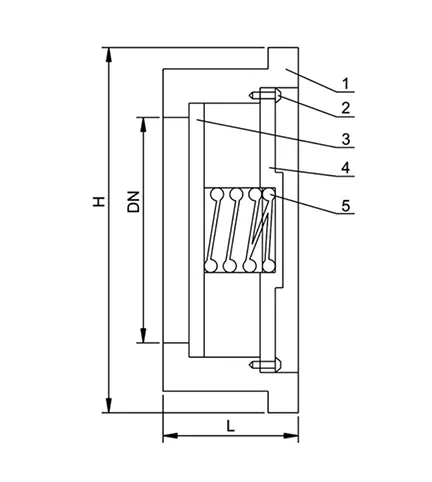10 月 . 31, 2024 11:36 Back to list
Understanding Wafer and Lugged Butterfly Valves for Industrial Applications and Efficiency
The Importance of Wafer and Lugged Butterfly Valves in Modern Industry
In the intricate world of fluid control systems, valves play a critical role. Among various types of valves, wafer and lugged butterfly valves stand out due to their unique design and functionality. These valves are essential components in a range of applications including water treatment, chemical processing, and HVAC systems. Understanding the differences, functionalities, and applications of these two types of butterfly valves can help industries make informed decisions in their fluid management processes.
Wafer Butterfly Valves
Wafer butterfly valves are designed with a versatile and compact configuration. They are sandwiched between two flanges, which allows for a lightweight construction that requires less space than traditional valve types. This design is especially beneficial in situations where space is limited. Wafer valves are often utilized in situations where there is a need for quick actuation and reliable sealing without the bulk of other valve types.
The main advantages of wafer butterfly valves lie in their simplicity and efficiency. These valves can be operated manually, or with actuators depending on the requirement. Their design reduces the potential for leaks, making them ideal for applications where maintaining fluid integrity is crucial. Furthermore, the low torque required for operation means that they can be opened and closed with minimal effort, enhancing system efficiency and reducing energy consumption.
Lugged Butterfly Valves
On the other hand, lugged butterfly valves feature a different design that provides additional versatility. Unlike wafer valves, lugged valves have threaded lugs that allow for easy installation in systems that necessitate the ability to disassemble components without having to remove the entire valve. This makes them the preferred choice in certain applications where maintenance is frequent or where the valve needs to be replaced without shutting down the entire system.
wafer and lugged butterfly valve

The lugged feature also enhances the strength and durability of the valve under high-pressure conditions, making them suitable for a wider range of applications. These valves are commonly used in scenarios where resilience to harsh conditions is required, such as fire protection systems and high-pressure water lines.
Key Applications
Both wafer and lugged butterfly valves are widely used in different sectors. Wafer valves are typically found in water treatment plants, mining operations, and light industrial applications due to their compactness and efficiency. They are particularly effective in applications where space economization is paramount.
Conversely, lugged butterfly valves are preferable in heavy-duty applications, including oil and gas industries, chemical processing, and HVAC systems, where the pressures and flow rates are higher, and disassembly is necessary for routine maintenance.
Conclusion
In summary, wafer and lugged butterfly valves are vital components in fluid control systems. Each type has its unique advantages and is suited to various applications depending on the specific requirements of the installation. While wafer valves excel in compactness and efficiency, lugged valves offer superior maintainability and strength under pressure. Choosing the correct type of butterfly valve is crucial for operational efficiency, safety, and cost-effectiveness in industrial applications. Understanding these valves' design and function can greatly impact the effectiveness of fluid management systems in today’s demanding industrial landscape.
Share
-
Understanding the Differences Between Wafer Type Butterfly Valve and Lugged Butterfly ValveNewsOct.25,2024
-
The Efficiency of Wafer Type Butterfly Valve and Lugged Butterfly ValveNewsOct.25,2024
-
The Ultimate Guide to Industrial Swing Check Valve: Performance, Installation, and MaintenanceNewsOct.25,2024
-
Superior Performance with Industrial Swing Check Valve: The Essential Valve for Any SystemNewsOct.25,2024
-
Industrial Swing Check Valve: The Ideal Solution for Flow ControlNewsOct.25,2024
-
You Need to Know About Industrial Swing Check Valve: Functionality, Scope, and PerformanceNewsOct.25,2024